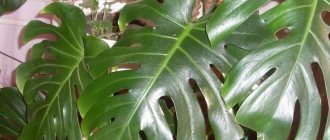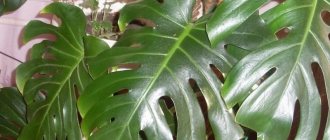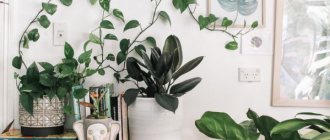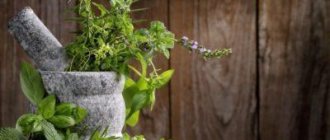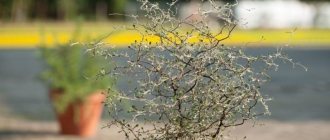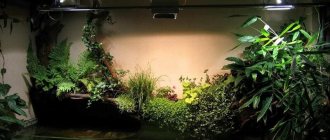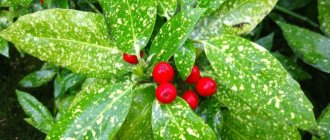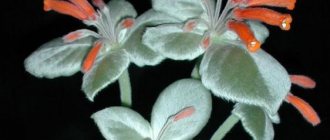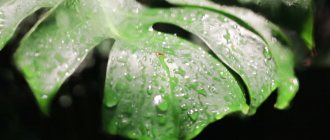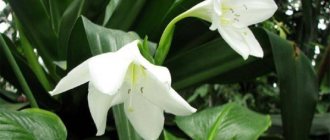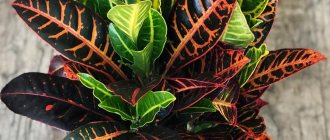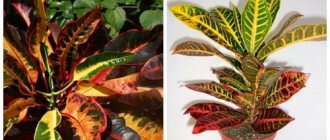The most unpretentious indoor flowers
A green corner does not necessarily mean a lot of new troubles and a waste of time. There are many completely unpretentious flowers that require your minimal participation.
Ficus
At the head of unpretentious and universal plants for the home is unconditionally the ficus with all the variety of its varieties. There are compact species up to 20 cm, and there are full-fledged trees that stretch several meters.
Aspidistra
Aspidistra became a regular guest in offices precisely because of her unpretentiousness. For decorative leaves, weekly watering is enough so that the temperature around does not fluctuate more than 3-5 degrees.
Aloe
Healing aloe is widely used in pharmaceuticals, cosmetology and hundreds of folk recipes. It is infinitely unpretentious on the windowsill, because the fleshy leaves independently store moisture and nutrients.
Aglaonema
Aglaonema is afraid of direct sunlight, so it is ideal for remote and shady corners. Decorative variegated species differ in color, up to rare red-pink.
Fuchsia
Beautiful decorative fuchsia can be easily grown at home on a windowsill, especially since in winter it just likes cool weather. In summer, the flower can be taken to the country and transplanted into a container.
Asparagus
Beautiful and unusual asparagus with needle-like leaves requires periodic watering and annual replanting. Otherwise, it does not need any special conditions and any lighting is suitable.
Balsam
Although impatiens are called impatiens, the small bush is completely unpretentious to care for. Partial shade and plenty of watering are enough for him, but he is completely indifferent to dry air.
Azalea
Flowering species of plants from the genus Rhododendron are united under the general name “azalea”. Under natural conditions, azalea is a shrub with oval leaves and flat or tubular flowers. Indian and Japanese varieties were the basis for the development of potted varieties with flowers of various shapes - simple, semi-double and double.
The home flower is an evergreen shrub 40-50 cm high. Medium-sized leaves are held on short petioles. The leaves are glossy on the front side, matte on the back. Pale red stripes can be seen on their surface.
Varieties are distinguished by flowering time:
- early , blooming in December;
- mid-early - in January;
- late - no earlier than February.
Japanese azalea has a less decorative appearance, but is popular due to its unpretentiousness, variety of varieties, and abundant flowering.
Climbing indoor flowers
Luxurious ivy and vines beautifully entwine walls, shelves or racks. You can grow quite a few different varieties and species in your room!
Monstera
Monstera is prized for its fancy and large carved leaves. It grows quickly and wraps around any support, attaching to it with thin aerial roots.
Cissus
Decorative cissus belongs to the grape variety and came to us from the islands. Special tendrils are firmly attached to the support, and the flower grows throughout the year - without pronounced dormant periods.
Tricolor morning glory
If morning glory grows in the garden for only a year, then in the room it is a lush flowering perennial with bright petals. It has rather large and heavy leaves, so it needs to be carefully tied to a support.
Wax ivy Hoya
The plant got its name from its unusual flower umbrellas, as if covered with wax. In order for ivy to grow more beautifully, it needs to be periodically replanted and tied up.
Stephanotis
The large vine reaches five meters in length and blooms with elegant fragrant flowers, for which it is also nicknamed Madagascar jasmine. The color of different varieties varies from soft cream to pale lilac.
Syngonium
Syngonium grows up to one and a half meters and clings tightly to the support. Among the variety of varieties, there are species with whitish, green or variegated leaves, which with age become lancet-lobed.
Dipladenia
Another climbing flowering guest from the tropics with large buds up to 10 cm in diameter. Dipladenia loves fresh air and open space, so in summer it can be taken to the balcony or street.
Hippeastrum
This plant is often confused with amaryllis; they are relatives, belong to the same family, but represent different genera. Hippeastrum is a perennial bulbous plant with long glossy leaves growing up to 70 cm, arranged in two rows. A leaf plate with a shallow groove in the center.
The peduncle is powerful and tall. It contains funnel-shaped flowers; they have different colors, including red. Large flowers, reaching 20 cm in diameter, are collected in inflorescences.
At home, hybrid varieties are cultivated that have large and small flowers, double, regular, tubular, reminiscent of orchids. For bright lush flowering, a full period of rest is necessary. If this condition is not met, small buds appear on a short peduncle, or the hippeastrum may not bloom at all. The smell is practically inaudible.
Indoor flowers that bloom all year round
If you want your home flower garden to delight you throughout the year, you can organize it! Decorative ever-flowering varieties are exactly what you need!
Abutilone
The beautiful abutilon is called indoor maple for its characteristic leaf shape. If you continue feeding and take care of lighting at the end of the season, it will bloom in winter.
Begonia
Begonia blooms all year long if the temperature around is above +16 degrees and it has enough light. Every two weeks, feed the flower and place a container of water around it to humidify the air.
Hibiscus
The beautiful evergreen hibiscus is nicknamed the Chinese rose for its beauty and elegance. It is quite demanding to care for and can drop all its buds if there is a lack of moisture.
Anthurium
Anthurium has not only beautiful flowers, but also large glossy leaves that resemble hearts. The plant requires moisture, spraying, fertilizing and heat - from +15 degrees.
Geranium
Unpretentious geraniums feel great on windowsills under any conditions. They don’t even need a very high temperature - +8 degrees is enough, but regular inflows of fresh air are required.
Koleriya
Kohleria attracts attention with its unusual bell-shaped flowers. It is undemanding in terms of lighting and watering, but requires high air humidity.
Balsam
In winter, balsam continues to bloom even under ordinary artificial lighting, for which flower growers value it. But he does not tolerate cramped spaces, so it is better to move the flowerpots away from neighbors.
Guzmania
The spectacular beauty Guzmania from the bromeliad family attracts the eye with spreading leaves and bright bracts. Guzmania is an epiphyte, the roots are intended to be attached to the tree trunk. The long and narrow leaves are tightly gathered at the base of the flower, forming a tall rosette, which in nature accumulates rainwater and morning dew necessary to nourish the flower.
A peduncle emerges from the center of the rosette, consisting of small leaves with bright bracts at the top. Flowering is long lasting, for several months . After its completion, the mother plant dies, leaving children in its place. It reaches a height of 80 cm including the peduncle.
Guzmania pollen is an allergen that causes skin rashes and itchy throat. If there are allergy sufferers in the family, purchase another plant.
Indoor flowers for the bathroom
A green corner in the bathroom is a real dream, because it promotes pleasant relaxation after a hard day. Not all plants will withstand such conditions, but we found several options!
Dracaena Sandera
Due to the special shape of its shoots, Dracaena Sandera is called indoor bamboo. It looks wonderful solo in pots and in glass vases with water. Keep in mind that she needs more space, because she grows quickly.
Orchid
There is a stereotype that orchids are extremely capricious, but several of their varieties will fit perfectly into the bathroom. These are phalaenopsis and paphiopedilum, which require high humidity and soft diffused light.
Philodendron
This is a hanging indoor plant, which requires much more moisture than light. It needs constantly moist soil and more space - very soon you will get a whole green wall.
Calathea
Large decorative calathea leaves feel ideal even at 90% humidity. They need warmth without sudden temperature changes and fairly short glimpses of the sun.
Nephrolepis
Exalted nephrolepis is one of the varieties of ferns that is not afraid of moisture and loves regular spraying. But it needs sunlight, so if there is no window in the bathroom, you will have to periodically take out the flowerpot.
Chlorophytum
Delicate and graceful chlorophytum is one of the most unpretentious indoor flowers. He loves a lot of moisture, which is quite enough in the bathroom, and can live and grow in the shade.
Dipladenia
The homeland of Dipladenia is the subtropical region of America, where there are about 50 species growing in the form of a bush or vine. Four species with flowers of different shades are grown at home.
Dipladenia superb has bright red large flowers. The plant is compact and does not take up much space. The leaves are green and glossy. Blooms for a long time, throughout the summer months. The shoots are literally strewn with flowers, and they give off a strong smell. Flower growers are attracted by the rapid growth and appearance of flowers within a year after planting.
Oleander
Oleander is an ornamental evergreen shrub used in landscape and indoor gardening. When grown outdoors, oleander is a bush or tree 3-4 meters high. At home, with the help of regular pruning, you can form a beautiful bush no more than a meter high. The branching brown stem is covered with rounded scales.
The elongated leaves are 10-15 cm in size, they are dense, smooth, and leathery to the touch. A light vein stands out clearly against a dark green background. The flowers are large, five-petaled. Breeders have developed varieties with double flowers, both plain and variegated. All varieties have a great aroma. Indoor plants of this family prefer diffused light.
Koleriya
Koleria is a perennial flower from the Gesneriaceae family. This herbaceous subshrub or shrub has a height of 60-80 cm. In koleria, velvety oval leaves with denticles along the edges are located in opposite pairs on the pubescent stems. Foliage color varies from light green to dark green, bronze to olive. The leaves are covered with soft white or reddish hairs.
Throughout the growing season, the plant is decorated with unusual flowers - they resemble an asymmetrical bell with an elongated corolla. The number of buds on one peduncle is from 1 to 3. Flower size is 5-6 cm . Different varieties differ in the color of the buds - there are smoothly colored ones and those marked with specks, strokes, and patterns.
The most common varieties with red flowers
- Red Ryder,
- Jester,
- Fluffy-flowered,
- Bogota,
- Majestic,
- Koloskovaya,
- hairy,
- Tubeflower.
Spurge
Botanists have not been able to accurately count all members of the Euphorbiaceae family. About 160 different species grow in our latitudes. These are annual and perennial herbs, shrubs, and low trees. Some varieties look like cacti. All euphorbias have a common feature that gives the family its name - poisonous milky sap. Some types of milkweed have found use in folk medicine.
Akalifa
In nature, Akalifa is a large shrub; at home, it is a compact indoor flower. A distinctive feature is the lush long inflorescences, reminiscent of spikelets or furry caterpillars. These inflorescences hang down, so Akalifa is planted in flower pots as an hanging plant.
These unusual flowers explain the second name - foxtail. Foxtail has fluffy long “catkins”, oval rich green leaves with sharp teeth along the edge.
Flowering begins in early spring and ends in late autumn. With proper care, 25-30 buds can appear simultaneously. At this time, abundant watering and fertilizing with fertilizers are necessary.
Griffith
Griffith's spurge (fire) is grown as a garden and indoor plant. The bush has a height of 50-80 cm and grows at a moderate speed. The stems are erect and begin to curl from the base. Growing up, they form a rounded bush, during flowering strewn with flowers shaped like a star.
Lanceolate leaf blades are located on short petioles; they are green with a matte white vein in the center. In mid-summer, inflorescences appear, shaped like an umbrella. The orange-red bracts make them especially decorative. The plant loves the sun's rays; the better the lighting, the brighter the color of the fiery milkweed.
mile
Euphorbia Milya is an inhabitant of window sills drenched in the sun. In shaded and cool places it loses its leaves and turns pale. In natural conditions it grows up to 3-4 meters, uses trees as a support, clinging to the bark with thorns. Young oval leaves develop at the tips of the shoots. Simultaneously with each leaf, 2 bracts grow, which, as they grow, harden and turn into sharp spines.
The leaves fall, leaving thorns on the strong, woody stems. The plant looks original - islands of soft green leaves on woody stems strewn with thorns. At home, it blooms all year round; the inflorescences are located on the tops of the shoots, resembling bright red drops. The most decorative are hybrid varieties. Frequent pruning of shoots is necessary to give shape.
Most beautiful
Plants that bloom during the frosty winter months are especially pleasing. It is at this time that the buds appear on the “Fairest” milkweed, which we know under the names “Poinsettia” and “Christmas Star”. In its natural form, the most beautiful euphorbia is a tall perennial shrub; breeders have bred dwarf varieties as potted plants. The dark green leaves have tiny teeth along the edges.
The most decorative element is the bracts, which are often mistaken for flowers. They can be brightly colored, including orange or red. Small pale flowers, collected in bunches, are inconspicuous. The “Winter Rose” variety with double flowers resembling scarlet roses in shape is very popular among flower growers. The varieties 'Jingle Bells' and 'Carousel Dark Red' have red bracts.
Leea
Not every gardener can boast of growing leia, a plant from the grape family. Leea has decorative leaves - large, feathery, with corrugated edges. At an early age, the leaves are painted bronze or purple; in an adult plant, this color is retained only on the underside of the leaf blade.
Leea is a highly branching bush with an airy, translucent crown. Thin shoots branch from the base. Growing a flowering specimen at home is not easy; small buds are collected in large inflorescences that resemble dense umbrellas. The inflorescence can simultaneously contain both flowers and dark red fruits, reminiscent of rowan berries. At home, the shrub grows a little more than 1 meter in height.
Columnea
These original indoor flowers are known to a small number of gardeners. Columnea comes from Latin America, in its natural nature it is an epiphyte; trees serve as its support. At home, the shoots begin to hang down as they grow, so the columnar plant is grown as an ampelous plant.
The peculiar appearance of the flowers allows the plant to be called a “goldfish”. The shoots are covered with small pointed oval leaves, pubescent or glossy depending on the variety. The flowers are very bright, shaped like an elongated tube with petals along the edge. Flowering begins in early winter.
Varieties with red flowers:
- Allen;
- Krakatoa;
- Blood red;
- Banks;
- Glorious;
- Majestic;
- Raymonda.
Most species are specially bred hybrids.
Pentas
The name of this flower directly indicates the shape of the flowers, they have 5 sharp petals. Pentas, also known as “Egyptian Star,” is a compact bush with numerous bright buds that open in winter. With proper care, it blooms for almost a whole year, with a short break for rest.
The stems are erect, up to 50 cm high, with virtually no side shoots. The leaves are opposite, rich green, oval. The leaf blade is wavy and pubescent. The flowers are collected in inflorescences with a diameter of 8-10 cm, resembling an umbrella in shape.
Varieties suitable for home cultivation:
- lanceolate;
- long-flowered;
- Pentas bussei;
- Pentas nobilis;
- Pentas zanzibarica.
"Egyptian Star" loves bright sun and feels good on a lit windowsill facing south.
